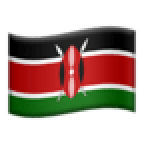Saba Saba, observed every July 7th, stands as one of Kenya’s most significant historical moments.
What began as a protest for multiparty democracy during the reign of former President Daniel arap Moi has transformed into a symbol of resistance, advocacy, and civic engagement.
This day continues to reflect Kenya's ongoing struggles for political freedom, social justice, and economic equity.
)
Protestors taking part in a demonstration in Nairobi
Origins of Saba Saba
In the late 1980s, Kenya was firmly under a one-party system controlled by Moi and his Kenya African National Union (KANU).
The government suppressed political opposition and press freedoms, creating widespread dissatisfaction among citizens. Economic mismanagement and the marginalization of various communities further fueled discontent.
The July 7, 1990 Protest
On July 7, 1990, opposition leaders like Kenneth Matiba, Charles Rubia, and Jaramogi Oginga Odinga organized a rally at Kamukunji Grounds in Nairobi, demanding the return of multiparty democracy.
However, the government banned the rally. Despite the ban, thousands of Kenyans defied the orders, leading to violent clashes with the police.
The protests resulted in arrests, detentions without trial, and several fatalities, which marked a pivotal moment in Kenya's push for democratic reform.
)
Saba Saba rally of 1990
The Aftermath and Shift Toward Democracy
The 1990 protests were more than just a day of unrest; they were a catalyst for change.
The events of that day played a crucial role in pressuring the Moi regime, ultimately leading to the repeal of Section 2A of the Kenyan Constitution in 1991.
This repeal restored multiparty democracy, allowing for a more open political landscape.
Saba Saba became a symbol of the power of civic activism, showing the strength of the Kenyan people in challenging authoritarian rule.
Civil society and youth activists were emboldened, and the movement paved the way for ongoing debates on governance, freedom, and equity.
)
Saba Saba rally of 1990
Key Figures in the Movement
Several key figures rose to prominence during the early years of Saba Saba. Leaders like Matiba, Rubia, and Oginga Odinga were instrumental in the 1990 protest.
Others, including Jaramogi Odinga, James Orengo, and Koigi wa Wamwere, continued to lead pro-democracy campaigns through the 1990s and into the 2000s.
Their advocacy for free elections and human rights would lay the foundation for a broader push for reforms across various sectors in Kenya.
In subsequent years, the day became synonymous with calls for constitutional reforms, police accountability, and environmental justice.
Activists such as Wangari Maathai used Saba Saba to rally women’s groups for broader societal change, while figures like Raila Odinga and Paul Muite called for people-driven constitutions and condemned electoral fraud.
)
From Democracy to Economic and Digital Justice
While the 1990s were focused on ending dictatorship and achieving multiparty democracy, the 2000s and 2010s saw Saba Saba evolve into a platform for a broader set of issues.
Human rights, constitutional reforms, and environmental justice were at the forefront of these movements. Activists like Maina Kiai in 2008 and Boniface Mwangi in 2013 led protests for police accountability and denounced corruption.
The 2020s ushered in a new generation of activists, particularly Gen Z and digital campaigners.
These young leaders are now taking the helm in driving movements for financial justice, youth empowerment, and digital rights.
As the issues surrounding Saba Saba expand, so does its reach. The protest now encompasses calls for better public services, digital freedoms, and equitable financial policies.
)
File image of a photo taken in 2024 when Kenyans took to the streets to protest tax hikes
Saba Saba Today
Saba Saba remains a vital part of Kenya’s civic calendar. It continues to be a day for reflection, activism, and protest. In 2023, Raila Odinga led a rally focusing on taxes, unemployment, and electoral injustice.
The most recent Saba Saba in 2024 saw Kenyans gather in memory of those killed in past protests, highlighting the enduring sacrifices made for Kenya’s democracy.
As the themes of Saba Saba continue to evolve, its significance remains unshaken. It is no longer merely a day for political protests but a powerful reminder of the people’s will to shape their nation’s future.
From its origins as a protest for multiparty democracy to its modern-day focus on digital freedoms, economic justice, and youth empowerment, Saba Saba has grown into an enduring symbol of resistance in Kenya.


)
)
)
)
)